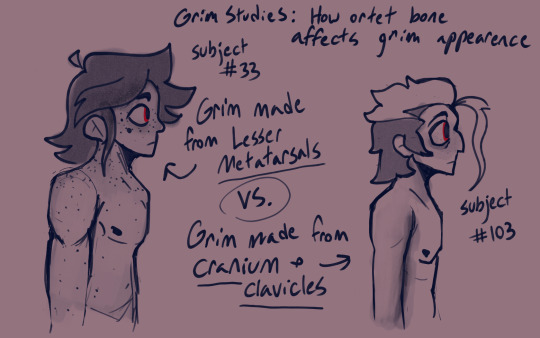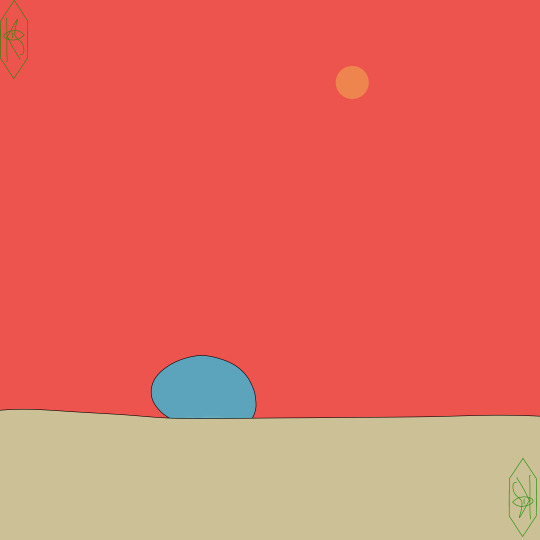#ramet
Text












4mix icons
Like or reblog, If you save/use
Credits always welcome
Ask is open
#120x120#icons#spirit fanfics#icons 120x120#kpop#kpop icons#tpop#thai pop#4mix#ninja#charukit khamhongsa#mcka#nattaphat deeloettrakun#folksong#chanintorn boonrod#george#Ramet Kiertsukudom#this is 4mix#fourmix
24 notes
·
View notes
Text

guillaume hora
16 notes
·
View notes
Note
Hey! I saw you post about 4mix in the tag, and I wanted to ask: could you maybe tell me about the members and the lgbtq+ concept of the group? I saw their new release yesterday and was really intrigued :) i hope you have a nice day! You don't have to answer this at all, it's just that there isn't much in English about them 😔
Hi anon, I wish I could tell you more than what is available on kprofiles.com, but I will try to give some of my perspective as someone who has been with them since debut. It is hard out here as a UNIX when 99.9% of their content is unsubbed.
So 4mix is a Thai pop group made of 4 members: Ninja, Mcka, Folksong, and George. Ninja, our fearless leader, is openly a member of the LGBTQ+ community. The other members have not declared anything one way or another about their sexualities. However, from the beginning, 4mix was actively promoted as an LGBTQ+ group.
They debuted in 2020 under the label KS GANG. Their debut song Y U Comeback was very well received but the label shut down completely back in July. Luckily the group was picked up last month by 411 Records and already released a new single.
Their music is very influenced by kpop and they are one of the few tpop boy groups currently active and/or still together.
You can find their new music videos and content here at the group's personal youtube channel and old music videos at KSGang's youtube channel.
You can read more about the group's history on tpop wiki and here on kprofiles.com.
Here is an English article about the group from Lifestyle Asia published earlier this year.
You can follow all the members and the group on Instagram.
@ninja.njcha
@folksong.cnt
@mcka_1809
@george_rmt
@4mix.official.th
Here is their official link tree as well.
And finally, here is their latest release:
youtube
#I love my little queer thai pop group so much y’all#thank you x1000 for this ask anon#4mix#ninja jarukit#mcka natphatra#folksong chaninthorn#george ramet#thai pop#tpop
12 notes
·
View notes
Text

#itileq#segob#toneno#dihaoy#awafek#ejoxe#ramete#der#nateas#ecesin#igemo#didut#tidi#asisom#osafo#kiri#bi#kobe#etesa#teqe#awecir#hesete#ofit#xen#hapedo#otesiw#tetu#eniheh#dasiwe#aguner
0 notes
Text
GRIMWALKER BIOLOGY & ANATOMY STUDIES [pt 1 / ?? ]
(aka, my ideas and thoughts on how these bad but sad boys work!)
with pictures :D !
ok for starters! I tried my best to make real life connections with actual biological stuff and yeah but there are some things ima have to bullshit lol
i hope yall like rambling

[ ^ Basic ideas ]
Lets talk about anatomy!
From what i can tell from the grim walker ingredient book they have some pretty ... interesting ingredients...
GALDORSTONE:
Heart and Power apparently. What i can make of this is that the Galderstone not only powers and animates the non-organic materials but acts as a circulatory system, flowing blood and nutrients to keep the body stable by creating magical pulses of pressure that makes the blood flow. Blood is kind of ideal for homeostasis and living and om pretty sure we've seen hunter bleed at least once...
Perhaps the Galderston can create an artificial vascular system to carry oxygen, magic, and nutrients throughout the growing body instead of just making veins from scratch.
I want to say the Galderstone can generate energy for the grimwalker but that would mean they wouldn't need to eat, and I don't think that's true. I think its main purpose is just activate the magic materials and is like the generator to a car, keeping it running. If the Galderstone were to break or fail, the grimwalker probably come unglued and fall apart to its components (which would be pretty horrifying)
ORTET BONE:
Very key component! The ortet bone kind of helps form the blueprint for the species of the grimwalker, as well as supplying blood, a skeletal system, and components of DNA.
The most basic definition of the word ORTET is as follows: the original plant from which the members of a clone have descended. Fun fact: since were using cloning terms, Hunter is to Caleb as Ramet is to Ortet (Ramet is an individual clone)
I did research for cloning and as it turns out you kinda need a complete genome for cloning but for bullshitting reasons (which will be explained) we can clone with incomplete DNA and make synthetic dna from scratch!
I hypothesis that the reason grims can look different from the ortet instead of just straight carbon copies is due to the bone that is used and how much of i there is. Like example a grimwalker made using just a toe phalange is going to look A LOT less like the ortet compared to a grimwalker made from something like the cranium and bigger bones and such. Basically smaller bones dont carry as much dna info and leads for room to fill in the blanks. Sadly this means alot of Grimwalkers had A LOT of health problems (this can range anywhere from immune system problems to liver failure which is quiet typical in clones, that and it is often that clones appear different from the ortet due to enviromental factors and influences)

[ As the image above shows, subject #103 has a very close resemblance to the ortet due to the bones that are used ]
There are pros and cons to using bones! Pros being that they can hold DNA for much longer than tissue, but the thing is bones can degrade really easy if not preserved, and i don't think belos had a bottle of hydrogen peroxide laying around that he could dunk Caleb in, so let's just assume he made sure his brother's corpse was well cleaned and kept.
Biggest con is the human body only has so many bones (about 206)
I believe that the reason Grimwalker can generate organs is by using the ortet and making the stem cells created from bone marrow. Stem cells are very important because they can turn into different types of cells like blood and tissue cells as well as repair tissue. I believe the process of growing grimwalkers is kind of like "Self-renewal" the process in which stem cells divide and make more of the body
STONESLEEPER LUNGS:
Im just gonna assume stone sleeper had very small lungs because aint no way those t rex lungs fit in a teenage boy.
I originally thought The reason that Grimwalkers can stay underground for so long is because the lungs, similar to how a stonesleeper hibernates for centuries (kind of like how wood frogs can basically cryo-hibernate) by petrifying but a grimwalker IS growing and therefore needs resources to grow, like how a baby does in the womb. So it has to be actively getting said resources so it cant be petrified.
I now think the reason that grimwalkers have these lungs is because theyre easily compatible to the galderstone, which needs oxygen for the blood and that they can be easily harvested and stored in stone form. But that does give room for cool adaptations like self-petrification! (which i will get into next time :D )
PALISTROM WOOD:
Ok its says that the wood is used for keratin, which is a fiberous protein which can make all kinds of things like scales, hair, nails, feathers, horns, claws, hooves, and skin! And since its also a plant means it can grow 4 times as fast as normal keratin can! This explains why hunters hair grew so ridiculously fast in season 3, was because his hair can produce its own carbohydrates and nutrients on its own... This means his skin and surface wounds can heal quite fast! (down side is it might give him something similar to PSS (Peeling Skin Syndrome ) ...)
I think Palisman is very important becasue of several reason!
1 Like palisman, it can "animate" if you will, more or less help pull off the illusion that he is alive.
2 Like mentioned before, Grimwalkers need nutrients to grow and I believe the palistrom wood aids in that! Using a process called cellular diffusion, the grimwalker can take in nutrients from the ground around them (which i theorize to be highly fertilized) through THEIR SKIN! and into the veins and flesh of the grims
3 I believe that in the process of forming, the galderstone "activates" the palistrom wood, forming into skin or hair but this process of rapid growth leaves the skin all undone and fragile because a proper cutaneous barrier was not formed yet (which is useful for being malleable. This is why Hunter's ears are so 1 .god blessed big because they are fake and molded to look like that. Its also why The grimwalker Belos possessed fell apart so easily, like he said "It wasnt ready")

SELKIEDOMUS SCALES:
This one kind of confused me because... well why do we need the seal flesh when the ortet can just regenerate it?? I think its kind of like the stuffing if you will, it also speeds up the process of producing flesh by a lot! Especially if you want to make grown grimwalkers!
Im thinking that Grimwalkers don't have a set "age" theyre just as big as however many materials they are given to work with.
Even though the book says they can start as babies, if you look closely there is a check mark towards the more adolescent figure, so im thinking that they are not ready to be unearthed until they reach a certain growth ima guess around the age of over 10-ish?? We don't know how young Hunter was pulled out of the floor but it seems like he was fairly young, or atleast younger. This means while Hunter appears to be 16, he might have only been living for around 5 years or so.

Now typically normal seals have a lot of blubber which is a thick layer of fat, also called adipose tissue, directly under the skin of a marine mammals. Its used for insulation. The thing is tho, it says Selkiedomus Scales, not flesh... Dont worry there are mammals that have scales like Pangolins but i dont know if these scales are like thick plated or small and stretchy. Magic bullshitting time, Im goin to assume Selkiedomus scales refers to a layer of scale-like flesh that protect the creature from boiling but is also highly malleable and easy to work with. Maybe the reason they can withstand such heat is due to unsaturated bonds of butadiene molecules mixed into the blubber that are highly heat resistant
Selkie domus flesh is molded and into the relative shape of desired body and using the DNA of the ortet the flesh is reshaped and reused into the desired muscles shapes. The vascular system created by the galderstone spreads throughout the flesh and binds with it. healing together and becoming flesh, kind of like a speed up version of skin graft maturation! This is useful for growing them quickly because they don't have to grow an entire adult body from scratch so this speed up the process by eeeerrm 20 years or so lol
Thats only the basics for now, sooner or later i shall get into the more fun stuff, like adaptaions of Grim walker, the growing process, ad more!
Hope you guys enjoyed my ideas, if i got anything incorrect let me know, my research isnt exremly searched through.
last question ill leave you all with, it kind of stumped me while i was working...

i have a theory but i wanna know your thoughts...
(i worked hard on all this btw, i really hope people read it lol /lh.)
#the owl house#toh#toh hunter#hunter toh#caleb wittebane#philip wittebane#emperor belos#grimwalker#golden guard#how tf do you draw a nipple#ima gonna sleep now...
324 notes
·
View notes
Text
RADIX NATIONALS RESULTS 2024
TEEN PROTEGE TOP 25:
Teegan Moylan - THE DIFFERENCE
Noelle Galla - THE DIFFERENCE
Emmerson Gertring - EVOKE
Adelyn Kolanz - DANCE UNIVERSE
Kylee Ngo - NOR CAL
Gage Davis - DANCE DELUXE
Emmy Claire Kaiden - EVOKE
Vanessa Soto - DANCE DELUXE
Alexis Mayer - THE ROCK
Maddie De Dios - EVOKE
Sydney Duke - DANCE STUDIO 111
Kalli Ramet - LYNCHBURG
Zachary Gibson - CANDANCE
Kinsley Oykhman - THE ACADEMY
Allegra Post - SWEATSHOP
Sophia Schaino - ELITE DANCE PRO
Natalie Galla - THE DIFFERENCE
Cade Kaiser - THE PAC
Riley Zeitler - WESTLAKE
Lexi Godwin - EVOKE
Coltrane Vodicka - EVOKE
Paris Dimos - BRENT STREET
Ellie Brunson - MLDA
Aaliyah Dixon - SUMMIT
Georgia Beth Peters - JBP
23 notes
·
View notes
Text
🔅Sun morning - ISRAEL REALTIME - Connecting to Israel in Realtime
🔻ALERTS.. (none since our last report last night)
🟠 6 months of war for survival, to live and not die, to flourish and not worry about rape, torture, or slaughter of our babies. May G-d give us success and life!
❗️(repeat) HEZBOLLAH’S NASRALLAH SAYS.. Great optimism that the end of the war is at hand due to the international PRESSURE and the PROTESTS within Israel.
▪️TERROR ATTACK - Ma’ale Shomron Intersection - Samaria.. Report of 2 wounded from a shooting at a bus and vehicles on Route 55 between Ezon and Nebi Elias, near the Eliyahu crossing. One shooter - active event, no more info. A 19-year-old woman is seriously hurt and a man in his 50s is in moderate condition.
▪️IDF DEEP ATTACK ON HEZBOLLAH.. in the Bekaa valley and/or Baalbek, the major weapons warehouse area for Hezbollah of weapons coming from Iran via Syria. At least 3 attacks.
▪️4 HERO SOLDIERS HAVE FALLEN.. in Gaza:
Amitai Even Shoshan, 20, of Moshav Azriel. He is the 19th graduate of Eli High School who has fallen in the war. May his family and his school be comforted among the mourners of Zion and Jerusalem, and may G-d avenge his blood!
Ido Baruch, 21, of Tel Mond. May his family be comforted among the mourners of Zion and Jerusalem, and may G-d avenge his blood!
Reef Harush, 20, of Kibbutz Ramet. May his family be comforted among the mourners of Zion and Jerusalem, and may G-d avenge his blood!
Ilai Air, 20, of Kidar. May his family be comforted among the mourners of Zion and Jerusalem, and may G-d avenge his blood!
- - Reef sends us this message written before he fell: “For that elderly woman who says thank you and cries, I am ready to sacrifice my life, and for my family, that they may sit quietly and peacefully, and that they know that there is a huge army behind them that will watch over them as long as we are on our feet."
The four were killed after gunmen who came out of a tunnel in a destroyed building opened fire at troops carrying out a patrol along the IDF’s logistics route in Khan Younis, according to an initial military probe. The operatives apparently managed to flee back into the tunnel.
May their memories be a blessing.
▪️IRAQ SHIA MILITIA FIRES AT EILAT.. The Islamic resistance in Iraq claims that they attacked a target using drones in Eilat. The drone did not arrive, it is clear that they are looking for/checking Israel's and Jordan’s air defense systems.
▪️ISRAEL POLITICS - THE HISTADRUT (Israeli Labor Union).. “The chairman of the Histadrut is determined to lead a change to strengthen society in Israel, but will not serve as a strike contractor for any side of the political map.”
19 notes
·
View notes
Text

100 Days of Sea Creatures Day 9 - Giant Siphonophore (Praya dubia)
Not a single animal but actually a collection of individual clones called ‘ramets.’
#artists on tumblr#artists on instagram#drawing daily#drawing challenge#deep sea creatures#sea creature art#jellyfish#sea creatures#siphonophore#art
13 notes
·
View notes
Text


pachyrodiciphytes, more commonly called a tuber lump, these waxy sedereamischos litter the maschoran deserts and function much like telluric pando tree, being a clonal colony, there are still many individual colonies, but regardless a large amount of ramets will litter the surface of the maschoran deserts, under the sand their roots contain many tubers, and many desert dwelling ◗ta in the past used to farm parchyrodiciphytes for said tubers, for both consumption and feed for domesticated seelenlos, many seelenlos native to the maschoran deserts will dig up the sand around tuber lumps and eat said tubers, some organisms subsist entirely off of these tubers, such as desert worms, blight frills, and even young macrodermaderes, if you have any questions about this sedereamischos please dont be afraid to ask i am more than happy to answer
#speculative biology#speculative botany#speculative evolution#speculative planet#speculative world#spec bio#spec botany#spec evo#spec planet#spec world#ngiu◗#exobiology#pachyrodiciphytes#tuber lump
9 notes
·
View notes
Note
Good day, dear Minister! I would like to congratulate you for the outstandingly positive results in your pre-election poll so far. Truly delightful to soon be able to celebrate your undeniable success!
However, I do have some concerns which I believe some of the other loyal voters might find themselves worried about as well. In the likely outcome that you become Prime Minister, will you keep *our* best interests at heart? I suppose you would never *forget any of us* when facing critical decisions about the direction of *our* future and collective glory, and that you will continue to tend your alliances over personal gain?
Thank you very much.
-Seth Ramet
I will keep *everyone's* best interests in mind when making all and any decisions. I will try my very best not to forget *anyone* and that's a promise.
13 notes
·
View notes
Text

💫💫💫
Vuslat
Bir uykuyu cananla beraber uyuyanlar,
Ömrün bütün ikbalini vuslatta duyanlar,
Bir hazzı tükenmez gece sanmakla zamani,
Görmezler ufuklarda, şafak söktügü anı...
Gördükleri ru`ya ezeli bahçedir aska;
Her mevsimi bir yaz ve esen rüzgarı başka.
Bülbülden o eglencede feryad işitilmez;
Gül solmayı; mehtab, azalıp gitmeyi bilmez...
Gök kubbesi her lahza, bütün gözlere mavi...
Zenginler o cennette fakirlerle musavi;
Sevdaları hülyalı havuzlarda serinler,
Sonsuz gibi, bir fıskiye ahengini dinler.
Bir ruh, o derin bahçede bir defa yasarsa
Boynunda O`nun kollari, koynunda O varsa,
Dalmışsa O`nun saçlarının rayihasiyle,
Sevmekteki efsunu duyar her nefesiyle.
Yıldızları, boydan boya dogmuş gibi, varlık
Bir mucize halinde o gözlerdendir artık.
Kanmaz, en uzun buseye, öptükçe susuzdur
Zira, susatan zevk, o dudaklardaki tuzdur.
İnsan ne yaratmışsa yaratmıştır o tuzdan...
Bir sır gibidir azçok ilah oldugumuzdan.
Onlar ki bu güller tutuşan bahçededirler.
Bir gün nereden hangi tesadufle gelirler?
Aşk, onları sevkettigi günlerde, kaderden
Rüzgar gibi bir şevk alır, oldukları yerden.
Geldikleri yol, ömrün ışıktan yoludur o!
Alemde bir akşam ne semavi koşudur o!
Dört atlı o gerdüne, gelirken dolu dizgin,
Sevmiş iki ruh ufku görürler daha engin,
Simalari her lahza parıldar bu zeferle;
Gök, her tarafından, donanır meş`alerle!
Bir uykuyu cananla beraber uyuyanlar,
Varlikta butun zevki o cennette duyanlar
Dunyayi unutmus bulunurken o sularda,
-Zalim saat ihmal edilen vakti calar da-
Bir an uyanirlarsa leziz uykulardan,
Bastanbasa, heryer kesilir kapkara, zindan...
Bir faciadir boyle bir alemde uyanmak...
Gunden gune, hicranla bunalmis gibi, yanmak...
Ey tali! Olumden ne beterdir bu karanlik!
Ey ask! O gonuller sana maloldular artik!
Ey vuslat! O asiklari efsuna ramet!
Ey tatli ve ulvi gece! Yillarca devam et!
Yahya Kemal Beyatlı
4 notes
·
View notes
Text
books that I am going to read from here on out. *book I am reading again.
-think and grow rich by napoleon hill
-i will teach you how to be rich by ramet sethi
-all about love by bell hooks *
-atomic habits by james clear*
-sacred woman by queen afua
-the prophet by khalil gibran
-the goddess woman by akil
-oneness by rasha
-alkaline herbal medicine by aquil aniys
-the art of seduction by robert greene
1 note
·
View note
Text
currencies + cryptocurrencies + periodic elements BUT including "a"
Acoin Acti Actis Acton Adicare Adin Ading Aditin Adium Admium Adoo Aeodoon Aeone Aeonium Aeosium Aetix Aetp Aetum Aetwon Aetwor Agno Agnosz Agon Agoun Agous Aidium Aing Aironi Airota Aise Aldecin Aler Aleu Alev Amanach Ameconc Amen Amero Amethal Ametp Anetsh Aneum Anium Anonium Anza Arank Ardaler Ardex Ardium Ared Aredium Areur Argen Aritco Arkark Arkka Arse Arswand Artcon Artin Ashal Ashium Assium Astran Atcon Aticork Atind Atuna Atunati Atus Augular Auguryō Balium Balt Baltom Bani Banos Barale Bayptum Berpark Billar Bita Bitra Bloona Blouna Bohain Borita Borka Bovaing Bovar Bovark Bovatum Brat Byttra Cadium Cale Calt Cang Cardtv Cartise Cash Cassium Castron Centa Chal Chark Chase Chmank Chshaní Clank Clare Cobang Coina Coincas Cura Curame Dalero Danium Diacoin Diam Dianium Diash Digmant Dinamp Dobran Drado Draler Drana Drank Drathal Dratum Dubstat Eitrad Ellare Elorkka Enetano Entase Eona Ermar Etalum Etstang Facoin Facoing Fain Fainex Fainn Faino Fainum Fanar Fanaver Fanium Fank Fant Feaal Feal Featmar Firhain Firswap Flona Fluran Flurona Frad Fraded Fradium Frado Frain Fral Frana Frand Frani Franium Frantra Franí Fras Frash Funame Fundas Gach Gacoin Gact Gallar Gametp Gamp Gangece Ganium Gantang Gash Gashium Genical Gibra Gitaven Gixdan Gonarat Guan Guaní Gulars Gulatus Gura Gxshain Hafeets Halton Harkel Hartch Harty Hash Horiam Hrotact Hsta Hstneba Hwabon Hwap Hydrand Iclar Inavcon Inobalc Iragnem Irswap Kenca Kollatu Komobal Krypiah Kunam Kwang Kwap Kyana Kyangs Kyatium Laalur Ladind Lanc Lang Lanium Lank Larbis Largold Larie Lark Lartix Lascat Lash Lawrev Lecark Lentran Lereura Lica Lionat Litash Liviah Luorabi Magol Magon Main Manca Mancium Mancoin Manex Manigix Maní Mare Maredo Mareih Margen Margium Marium Markel Mars Marsee Matcoin Mecat Mermain Mermark Mismane Mobank Mobra Moham Mona Monar Moncar Muna Nactom Nanium Nark Neta Nethal Netham Nxtrant Opplark Osiah Pain Pald Palt Palum Pardium Pareso Park Paypee Paypia Paypium Pechar Phydra Piach Piah Piaht Piasher Platis Pollark Polívat Pona Pota Potam Potaves Pouna Prat Prias Qaseo Qashain Qass Qassium Qtuna Quan Quana Quang Quano Quant Quar Quethas Racoin Ragnetu Rago Raingo Ralit Ramet Rang Ranium Rank Rano Ranum Ratoris Readium Ream Reatung Redaar Rediaht Redita Requand Rhain Riaht Riash Ricaler Rigma Rinam Ripia Ritanos Riumang Rubstra Runar Rundal Runfain Rupia Rustam Safeem Safnium Sald Salium Same Scal Scalt Scar Scash Seaal Segouna Shal Shang Shani Sharium Shark Siaht Sianc Sias Sillash Somain Somar Somina Stacoin Stalt Stam Stat Staton Stebay Steerma Sthal Strale Stranum Straní Stroman Sucoina Sulaní Sular Tallar Taver Tebar Teta Thal Ticas Trani Uralc Urypiah Vain Vaisa Vanam Vancon Vang Vanium Vanza Vata Vatin Vermar Vesomar Viah Viank Wabium Wabyter Walc Walen Walt Wancivx Wang Wank Wano Wanum Waver Xtrash Yand Yatunde Yttrang Yuanc Yuank Yuarke Zcade Zcalt Zcares Zcark Złotal Złotat
1 note
·
View note
Text
An Amazon Plants Balancing Act Between Sex & Cloning
An Amazon Plant’s Balancing Act Between Sex & Cloning
https://ift.tt/MimZIbT
In the eastern Amazon lives Daphnopsis filipedunculata, a plant with a complicated sex life. The plants are dioecious, meaning that they have male or female flowers. They cannot pollinate themselves, so they have to swap genes – but they’re not successful very often. So how does the species survive? A paper by da Silva Carvalho and colleagues shows that a lot of their success comes from cloning.
The key finding of the paper is that a lot of Daphnopsis filipedunculata‘s reproductive success doesn’t come from the flowers, but from the other end of the plant, the roots. Open pollination of flowers only led to them setting seed in 23% of the flowers. However, the roots also help reproduction by producing new shoots that become new copies of the original plant, known as a ramet.
The team found this out by collecting leaf samples from 49 Daphnopsis filipedunculata plants in the Amazon. The team analysed the plants’ DNA to identify clones and measure genetic diversity. They also analysed the anatomy of the plants to determine where new ramets sprang from.
The discovery that Daphnopsis filipedunculata balances sexual reproduction with cloning puts it alongside many other plants that have independently adopted this form of reproduction. Cloning helps plants survive in environments where sexual reproduction is difficult. However, too much cloning can reduce genetic diversity, which is crucial for adapting to changes. The study underlines the importance of considering genetic diversity in conservation programmes.
Carvalho, C. S., da Costa, L. E. N., Leal, B. S. S., Silva, K. R., Valentin-Silva, A., Costa, A. C. G., Tyski, L., dos Santos, F. M. G., & Watanabe, M. T. C. (2024). Mating system, morphological, and genetic evidence endorse clonality as an essential reproductive mode in Daphnopsis filipedunculata (Thymelaeaceae), a dioecious and endemic species from the Amazon. AoB PLANTS, 16(1), plae048. https://doi.org/10.1093/aobpla/plae048
Cross-posted to Bluesky, Mastodon & Threads.
The post An Amazon Plant’s Balancing Act Between Sex & Cloning appeared first on Botany One.
via Botany One https://botany.one/
September 13, 2024 at 04:30AM
0 notes
Text
Fwd: Postdoc: CharlesU_Prague.Bioinformatics
Begin forwarded message:
> From: [email protected]
> Subject: Postdoc: CharlesU_Prague.Bioinformatics
> Date: 17 August 2024 at 05:11:55 BST
> To: [email protected]
>
>
>
> Bioinformatician Postdoc position in
> Plant Evolutionary Biology
>
> The Department of Botany, Charles University, Prague, Czech Republic,
> offers a two years Bioinformatician Postdoc position in Plant Evolutionary
> Biology. The preferred start date for this position is the 1st of January
> 2025 (with some flexibility).
>
> The postdoc position aims to unravel the consequences of whole genome
> multiplication (WGM), i.e. polyploidisation, on genomic traits that
> alter the reproductive strategies of autopolyploid plants and determine
> their evolutionary trajectory. The postdoc position is part of a project
> funded by the Czech Science Foundation (GA??R) and led by Patrik Mr??z
> (Department of Botany) with the participation of experts in plant
> physiology, embryology and bioinformatics.
>
> Polyploidisation is a key evolutionary mechanism that can lead to
> instantaneous multiple changes manifested at different structural,
> developmental and functional levels, from genes to phenotypic
> traits. Despite the widespread occurrence of polyploidy in vascular
> plants, we still know little about the direct phenotypic effects of WGM,
> the underlying physiological and transcriptomic patterns, and the fitness
> consequences.
>
> We will use Pilosella rhodopea (Asteraceae, Compositae), a species
> that forms the largest primary contact zone of diploids and recurrent
> autopolyploids ever recorded in angiosperms. Although WGM severely
> disrupts sexual reproduction in autopolyploids, it enhances vegetative
> reproduction both quantitatively and qualitatively to such an extent that
> it literally changes the game by allowing autopolyploids to successfully
> establish and persist, with putative strong effects on their spatial
> clonal structure and ramet age.
>
> The successful candidate will investigate (i) the impact of WGM on
> transriptomic profiles in diploid and autotri- and autotetrapolyploids,
> with aspecial emphasize on two newly expressed clonal traits - root
> sprout buds and aposporic initials, and (ii) phylogenetic relationships
> and genetic structure of the Pilosella alpicola group.
>
> Profile & Qualifications
>
> Highly motivated applicants with excellent communication and demonstrable
> writing skills, and a strong interest in evolutionary biology should
> hold PhD in Bioinformatics or Biology. Previous experience and proven
> skills with analyses of genomic / transcriptomic data is a requirement.
>
> Funding
>
> Accepted applicant will be supported by the project from the Czech Science
> Foundation for two years (2025-2026) with a50,000 CZK / month gross salary
> (~ 2,000 EUR, depending on the current rate).
>
> How to apply
>
> Please send your motivation letter including your CV and contact
> details of two referees as a single pdf file by e-mail to Patrik Mr??z,
> [email protected] before the 15th of October 2024.
>
> For further information please write to:
>
> [email protected]
>
> https://ift.tt/giq8VYL
>
> https://ift.tt/CHYocxi
>
> Patrik Mr??z
> Herbarium PRC & Department of Botany
>
> Charles University,Faculty of Science
> Ben??tsk?? 2, 128 00 Praha 2
> CZECHIA
> Tel.: +420 221 95 1642
> https://ift.tt/DdzZXg3
>
> https://ift.tt/giq8VYL
>
> https://ift.tt/CHYocxi
>
> Patrik Mr??z
0 notes
Text
Just as in humans, sex organ
Just as in humans, sex organ is organized by penis and vagina
How is sex mating formed in plants
Once pollen gets transferred to the stigma the male gametes from pollen grains release and fuse with the egg in the ovule to form a zygote. This process of fusion of gametes is called fertilization. The zygote thus formed, divides and develops into an embryo, and later into a seed. The ovary develops into a fruit.
12.5: Mating Systems in Plants
Biology LibreTexts
https://bio.libretexts.org › ... › 12: Sex Strategies
4 Mar 2024
Asexual Reproduction
Many plants are facultatively sexual rather than obligately sexual. Asexual reproduction is a type of reproduction where the offspring comes from one parent only, thus, inheriting the characteristics of the parent. Asexual reproduction in plants occurs in two fundamental forms vegetative reproduction and agamospermy.1 Vegetative reproduction involves a vegetative piece of the original plant producing new individuals by budding, tillering, etc. and is distinguished from apomixis, which is a replacement of sexual reproduction, and in some cases involves seeds. Apomixis occurs in many plant species such as dandelions (Taraxacum species) and also in some non-plant organisms. For apomixis and similar processes in non-plant organisms, see parthenogenesis.
Natural vegetative reproduction is a process mostly found in perennial plants, and typically involves structural modifications of the stem or roots and in a few species leaves. Most plant species that employ vegetative reproduction do so as a means to perennialize the plants, allowing them to survive from one season to the next and often facilitating their expansion in size. A plant that persists in a location through vegetative reproduction of individuals constitutes a clonal colony. A single ramet, or apparent individual, of a clonal colony is genetically identical to all others in the same colony. The distance that a plant can move during vegetative reproduction is limited, though some plants can produce ramets from branching rhizomes or stolons that cover a wide area, often in only a few growing seasons. In a sense, this process is not one of reproduction but one of survival and expansion of biomass of the individual. When an individual organism increases in size via cell multiplication and remains intact, the process is called vegetative growth. However, in vegetative reproduction, the new plants that result are new individuals in almost every respect except genetic. A major disadvantage of vegetative reproduction, is the transmission of pathogens from parent to offspring. It is uncommon for pathogens to be transmitted from the plant to its seeds (in sexual reproduction or in apomixis), though there are occasions when it occurs.2
Seeds generated by apomixis are a means of asexual reproduction, involving the formation and dispersal of seeds that do not originate from the fertilization of the embryos. Hawkweeds (Hieracium), dandelions (Taraxacum), some species of Citrus and Kentucky blue grass (Poa pratensis) all use this form of asexual reproduction. Pseudogamy occurs in some plants that have apomictic seeds, where pollination is often needed to initiate embryo growth, though the pollen contributes no genetic material to the developing offspring.3 Other forms of apomixis occur in plants also, including the generation of a plantlet in replacement of a seed or the generation of bulbils instead of flowers, where new cloned individuals are produced.
Sexual Reproduction
Sexual reproduction involves two fundamental processes: meiosis, which rearranges the genes and reduces the number of chromosomes, and fertilisation, which restores the chromosome to a complete diploid number. In between these two processes, different types of plants and algae vary, but many of them, including all land plants, undergo alternation of generations, with two different multicellular structures (phases), a gametophyte and a sporophyte.
In mosses and liverworts, the gametophyte is relatively large, and the sporophyte is a much smaller structure that is never separated from the gametophyte. In ferns, gymnosperms, and flowering plants (angiosperms), the gametophytes are relatively small and the sporophyte is much larger. In gymnosperms and flowering plants the megagametophyte is contained within the ovule (that may develop into a seed) and the microgametophyte is contained within a pollen grain.
In the evolution of early plants, abiotic means, including water and much later, wind, transported sperm for reproduction. The first plants were aquatic, and released sperm freely into the water to be carried with the currents. Ancestral land plants like liverworts and mosses have motile sperm that swam in a thin film of water or were splashed in water droplets. As taller and more complex plants evolved, modifications in the alternation of generations evolved. In the Paleozoic era progymnosperms reproduced by using spores dispersed on the wind and many gymnosperms and some angiosperms still rely on wind for gamete dispersal. The seed plants including seed ferns, conifers and cordaites have pollen grains that contain the male gametes for protection of the sperm during the process of transfer from the male to female parts. Angiosperms, or flowering plants, are the most derived and most abundant plant species and they rely on flowers producing pollen and ovules for reproduction.
Self-Fertilization and Self-Incompatibility
Many species of plants, particularly those which produce both staminate and pistillate flowers or produce ‘perfect’ bisexual flowers, also have the ability to reproduce sexually with themselves. This is advantageous particularly if pollination services are unreliable or unpredictable, as it ensures the plant still has some fitness. Self-pollination is a form of pollination in which pollen from the same plant arrives at the stigma of a flower (in flowering plants) or at the ovule (in gymnosperms). The term selfing that is often used as a synonym, is not limited to self-pollination, but also applies to other types of self-fertilization. Plants may either be obligately self-fertilizing, or facultatively so. In facultatively selfing plants, there may be mechanisms which delay selfing, such as stamens that are initially reflexed but move to come into contact with the stigma. About 42% of flowering plants exhibit a mixed mating system in nature.4 In the most common kind of system, individual plants produce a single flower type and fruits may contain self-pollinated, out-crossed or a mixture of progeny types. Another mixed mating system is referred to as dimorphic cleistogamy. In this system a single plant produces both open, potentially out-crossed and closed, obligately self-pollinated cleistogamous flowers.5
Still other species are self-incompatible, and will reject their own pollen grains if they land on their own stigmatic surface. These plants are obligately outcrossing, and must successfully sexually reproduce with another member of their species. In plants with SI, when a pollen grain produced in a plant reaches a stigma of the same plant or another plant with a matching allele or genotype, the process of pollen germination, pollen-tube growth, ovule fertilization, or embryo development is inhibited, and consequently no seeds are produced. SI is one of the most important means of preventing inbreeding and promoting the generation of new genotypes in plants and it is considered one of the causes of the spread and success of angiosperms on the earth.
Outcrossing Fertilization
Plants that use insects or other animals to move pollen from one flower to the next have developed greatly modified flower parts to attract pollinators and to facilitate the movement of pollen from one flower to the insect and from the insect back to the next flower. Flowers of wind-pollinated plants tend to lack petals and or sepals; typically large amounts of pollen are produced and pollination often occurs early in the growing season before leaves can interfere with the dispersal of the pollen. Many trees and all grasses and sedges are wind-pollinated.
Plants have a number of different means to attract pollinators including color, scent, heat, nectar glands, edible pollen and flower shape. Along with modifications involving the above structures two other conditions play a very important role in the sexual reproduction of flowering plants, the first is the timing of flowering and the other is the size or number of flowers produced. Often plant species have a few large, very showy flowers while others produce many small flowers, often flowers are collected together into large inflorescences to maximize their visual effect, becoming more noticeable to passing pollinators. Flowers are attraction strategies and sexual expressions are functional strategies used to produce the next generation of plants, with pollinators and plants having co-evolved, often to some extraordinary degrees, very often rendering mutual benefit. Specialization can be advantageous because it results in more consistent pollination services. As a result, the specialized pollinator and plant can exert strong selective pressure on each other, leading to coevolution. Examples of this include the coevolution between figs and fig wasps, or yucca and yucca moths, wherein the yucca moths are both the obligate pollinators and the antagonistic herbivores of yucca. Another visually striking example is the co-evolution of long floral corollas and long beaks or proboscii in pollinators 12.5.1A+B
.
In plants, sex is organised through pollen, but in fish, the most mysterious kind of sex is organised. Male fish release semen into the water and female fish eat it.
Translate Hindi
जैसे मनुष्य में सेक्स निवारण पेनिस और वेजाइना द्वारा संगठित होता है
पौधों में सेक्स संगम कैसे बनता है
एक बार जब पराग वर्तिकाग्र में स्थानांतरित हो जाता है, तो पराग कणों से नर युग्मक मुक्त हो जाते हैं और बीजांड में अंडे के साथ जुड़कर युग्मनज बनाते हैं। युग्मकों के संलयन की इस प्रक्रिया को निषेचन कहा जाता है। इस प्रकार बनने वाला युग्मनज विभाजित होकर भ्रूण में विकसित होता है और बाद में बीज में बदल जाता है। अंडाशय फल में विकसित होता है।
12.5: पौधों में संभोग प्रणाली
जीव विज्ञान LibreTexts
https://bio.libretexts.org › ... › 12: सेक्स रणनीतियाँ
4 मार्च 2024
अलैंगिक प्रजनन
कई पौधे अनिवार्य रूप से यौन के बजाय कल्पित रूप से यौन होते हैं। अलैंगिक प्रजनन एक प्रकार का प्रजनन है जहाँ संतान केवल एक माता-पिता से आती है, इस प्रकार, माता-पिता की विशेषताओं को विरासत में लेती है। पौधों में अलैंगिक प्रजनन दो मौलिक रूपों में होता है: कायिक प्रजनन और अगामोस्पर्मी। 1 कायिक प्रजनन में मूल पौधे का एक कायिक भाग शामिल होता है जो कलिकायन, टिलरिंग आदि द्वारा नए व्यक्तियों का उत्पादन करता है और यह अपोमिक्सिस से अलग होता है, जो लैंगिक प्रजनन का प्रतिस्थापन है और कुछ मामलों में इसमें बीज शामिल होते हैं। अपोमिक्सिस कई पौधों की प्रजातियों जैसे सिंहपर्णी (टारैक्सैकम प्रजाति) और कुछ गैर-पौधे जीवों में भी होता है। गैर-पौधे जीवों में अपोमिक्सिस और इसी तरह की प्रक्रियाओं के लिए, अनिषेकजनन देखें।
प्राकृतिक कायिक प्रजनन एक ऐसी प्रक्रिया है जो ज्यादातर बारहमासी पौधों में पाई जाती है और इसमें आमतौर पर तने या जड़ों और कुछ प्रजातियों के पत्तों में संरचनात्मक संशोधन शामिल होते हैं। अधिकांश पौधों की प्रजातियां जो कायिक प्रजनन का उपयोग करती हैं, वे पौधों को बारहमासी बनाने के साधन के रूप में ऐसा करती हैं, क्लोनल कॉलोनी का एक एकल रेमेट या स्पष्ट व्यक्ति आनुवंशिक रूप से उसी कॉलोनी के अन्य सभी के समान होता है। वानस्पतिक प्रजनन के दौरान एक पौधा जिस दूरी तक जा सकता है, वह सीमित होती है, हालांकि कुछ पौधे शाखाओं वाले प्रकंदों या स्टोलन से रेमेट का उत्पादन कर सकते हैं जो अक्सर केवल कुछ ही बढ़ते मौसमों में एक विस्तृत क्षेत्र को कवर करते हैं। एक अर्थ में, यह प्रक्रिया प्रजनन की नहीं बल्कि जीवित रहने और व्यक्ति के बायोमास के विस्तार की है। जब एक व्यक्तिगत जीव कोशिका गुणन के माध्यम से आकार में बढ़ता है और बरकरार रहता है, तो इस प्रक्रिया को वनस्पति वृद्धि कहा जाता है। हालाँकि, वनस्पति प्रजनन में, परिणामस्वरूप जो नए पौधे बनते हैं, वे आनुवंशिक को छोड़कर लगभग हर मामले में नए व्यक्ति होते हैं। वनस्पति प्रजनन का एक बड़ा नुकसान माता-पिता से संतानों में रोगजनकों का संचरण है। पौधों से उसके बीजों में रोगाणुओं का संचार होना असामान्य है (यौन प्रजनन या अपोमिक्सिस में), हालांकि ऐसे मौके भी आते हैं जब ऐसा होता है।2 अपोमिक्सिस द्वारा उत्पन्न बीज अलैंगिक प्रजनन का एक साधन है, जिसमें ऐसे बीजों का निर्माण और फैलाव शामिल होता है जो भ्रूण के निषेचन से उत्पन्न नहीं होते हैं। हॉकवीड्स (हिरासियम), डंडेलियन (टारैक्सैकम), साइट्रस की कुछ प्रजातियाँ और केंटकी ब्लू ग्रास (पोआ प्रेटेंसिस) सभी अलैंगिक प्रजनन के इस रूप का उपयोग करते हैं। स्यूडोगैमी कुछ पौधों में होती है जिनमें अपोमिक्सटिक बीज होते हैं, जहाँ भ्रूण के विकास को आरंभ करने के लिए अक्सर परागण की आवश्यकता होती है, हालाँकि पराग विकासशील संतानों में कोई आनुवंशिक सामग्री नहीं देता है।3 पौधों में अपोमिक्सिस के अन्य रूप भी होते हैं, जिसमें बीज के स्थान पर पौधे का निर्माण या फूलों के बजाय बल्बिल का निर्माण शामिल है, जहाँ नए क्लोन किए गए व्यक्ति उत्पन्न होते हैं। यौन प्रजनन
यौन प्रजनन में दो मूलभूत प्रक्रियाएँ शामिल हैं: अर्धसूत्रीविभाजन, जो जीन को पुनर्व्यवस्थित करता है और गुणसूत्रों की संख्या को कम करता है, और निषेचन, जो गुणसूत्र को पूर्ण द्विगुणित संख्या में पुनर्स्थापित करता है। इन दो प्रक्रियाओं के बीच, विभिन्न प्रकार के पौधे और शैवाल भिन्न होते हैं, लेकिन उनमें से कई, जिनमे��� सभी भूमि पौधे शामिल हैं, दो अलग-अलग बहुकोशिकीय संरचनाओं (चरणों), एक गैमेटोफाइट और एक स्पोरोफाइट के साथ पीढ़ियों के परिवर्तन से गुजरते हैं।
मॉस और लिवरवॉर्ट्स में, गैमेटोफाइट अपेक्षाकृत बड़ा होता है, और स्पोरोफाइट एक बहुत छोटी संरचना होती है जिसे कभी भी गैमेटोफाइट से अलग नहीं किया जाता है। फ़र्न, जिम्नोस्पर्म और फूल वाले पौधों (एंजियोस्पर्म) में, गैमेटोफाइट अपेक्षाकृत छोटे होते हैं और स्पोरोफाइट बहुत बड़ा होता है। जिम्नोस्पर्म और फूल वाले पौधों में मेगागैमेटोफाइट बीजांड के भीतर होता है (जो बीज में विकसित हो सकता है) और माइक्रोगैमेटोफाइट पराग कण के भीतर होता है।
प्रारंभिक पौधों के विकास में, अजैविक साधनों, जिसमें पानी और बहुत बाद में हवा शामिल है, ने प्रजनन के लिए शुक्राणुओं का परिवहन किया। पहले पौधे जलीय थे, और धाराओं के साथ ले जाने के लिए पानी में स्वतंत्र रूप से शुक्राणु छोड़ते थे। लिवरवॉर्ट और मॉस जैसे पैतृक भूमि पौधों में गतिशील शुक्राणु होते हैं जो पानी की एक पतली परत में तैरते थे या पानी की बूंदों में छींटे होते थे। जैसे-जैसे लम्बे और अधिक जटिल पौधे विकसित हुए, पीढ़ियों के परिवर्तन में संशोधन विकसित हुए। पैलियोज़ोइक युग में प्रोजिम्नोस्पर्म हवा में फैले बीजाणुओं का उपयोग करके प्रजनन करते थे और कई जिम्नोस्पर्म और कुछ एंजियोस्पर्म अभी भी युग्मक फैलाव के लिए हवा पर निर्भर हैं। बीज वाले पौधों में बीज फ़र्न, कोनिफ़र और कॉर्डाइट्स में पराग कण होते हैं जिनमें नर युग्मक होते हैं जो नर से मादा भागों में स्थानांतरण की प्रक्रिया के दौरान शुक्राणु की सुरक्षा करते हैं। एंजियोस्पर्म, या फूल वाले पौधे, सबसे अधिक व्युत्पन्न और सबसे प्रचुर मात्रा में पाए जाने वाले पौधे हैं और वे प्रजनन के लिए पराग और बीजांड पैदा करने वाले फूलों पर निर्भर हैं। स्व-निषेचन और स्व-असंगतता
पौधों की कई प्रजातियाँ, खास तौर पर वे जो पुंकेसर और स्त्रीकेसर दोनों तरह के फूल पैदा करती हैं या ‘परफेक्ट’ उभयलिंगी फूल पैदा करती हैं, उनमें खुद के साथ यौन प्रजनन करने की क्षमता भी होती है। यह खास तौर पर फायदेमंद है अगर परागण सेवाएँ अविश्वसनीय या अप्रत्याशित हैं, क्योंकि यह सुनिश्चित करता है कि पौधे में अभी भी कुछ योग्यता है। स्व-परागण परागण का एक रूप है जिसमें एक ही पौधे से पराग फूल के कलंक (फूल वाले पौधों में) या बीजांड (जिम्नोस्पर्म में) पर पहुँचता है। स्व-परागण शब्द जिसे अक्सर पर्यायवाची के रूप में इस्तेमाल किया जाता है, केवल स्व-परागण तक सीमित नहीं है, बल्कि अन्य प्रकार के स्व-निषेचन पर भी लागू होता है। पौधे या तो अनिवार्य रूप से स्व-निषेचन कर सकते हैं, या फिर स्वेच्छा से। स्वेच्छा से स्व-निषेचन करने वाले पौधों में, ऐसे तंत्र हो सकते हैं जो स्व-निषेचन में देरी करते हैं, जैसे कि पुंकेसर जो शुरू में प्रतिवर्तित होते हैं लेकिन कलंक के संपर्क में आने के लिए आगे बढ़ते हैं। प्रकृति में लगभग 42% फूल वाले पौधे मिश्रित प्रजनन प्रणाली प्रदर्शित करते हैं।4 सबसे आम प्रकार की प्रणाली में, अलग-अलग पौधे एक ही प्रकार के फूल उत्पन्न करते हैं और फलों में स्व-परागण, बाह्य-संकरण या संतति प्रकारों का मिश्रण हो सकता है। एक अन्य मिश्रित प्रजनन प्रणाली को द्विरूपी क्लिस्टोगैमी कहा जाता है। इस प्रणाली में एक ही पौधा खुले, संभावित रूप से बाह्य-संकरण और बंद, अनिवार्य रूप से स्व-परागण वाले क्लिस्टोगैमस फूल दोनों उत्पन्न करता है।5
अभी भी अन्य प्रजातियाँ स्व-असंगत हैं, और यदि वे अपने स्वयं के वर्तिकाग्र सतह पर उतरते हैं तो वे अपने स्वयं के पराग कणों को अस्वीकार कर देंगे। ये पौधे अनिवार्य रूप से बाह्य-संकरण कर रहे हैं, और उन्हें अपनी प्रजाति के किसी अन्य सदस्य के साथ सफलतापूर्वक यौन प्रजनन करना चाहिए। SI वाले पौधों में, जब किसी पौधे में उत्पादित पराग कण समान पौधे या मिलान करने वाले एलील या जीनोटाइप वाले किसी अन्य पौधे के वर्तिकाग्र तक पहुँचता है, तो पराग अंकुरण, पराग-नलिका वृद्धि, बीजांड निषेचन या भ्रूण विकास की प्रक्रिया बाधित होती है, और परिणामस्वरूप कोई बीज उत्पन्न नहीं होता है। एसआई पौधों में अंतःप्रजनन को रोकने और नए जीनोटाइप की पीढ़ी को बढ़ावा देने के सबसे महत्वपूर्ण साधनों में से एक है और इसे पृथ्वी पर एंजियोस्पर्म के प्रसार और सफलता के कारणों में से एक माना जाता है।
आउटक्रॉसिंग फर्टिलाइजेशन
पौधे जो एक फूल से दूसरे फूल में पराग ले जाने के लिए कीटों या अन्य जानवरों का उपयोग करते हैं, उन्होंने परागणकों को आकर्षित करने और एक फूल से कीट तक और कीट से अगले फूल तक पराग की आवाजाही को सुविधाजनक बनाने के लिए बहुत संशोधित फूल भागों का विकास किया है। पवन-परागण वाले पौधों के फूलों में पंखुड़ियों और या बाह्यदलों की कमी होती है; आम तौर पर बड़ी मात्रा में पराग का उत्पादन होता है और परागण अक्सर बढ़ते मौसम की शुरुआत में होता है इससे पहले कि पत्तियाँ पराग के फैलाव में बाधा डाल सकें। कई पेड़ और सभी घास और सेज पवन-परागण हैं।
पौधों के पास परागणकर्ताओं को आकर्षित करने के लिए कई अलग-अलग तरीके हैं, जिनमें रंग, गंध, गर्मी, अमृत ग्रंथियाँ, खाद्य पराग और फूल का आकार शामिल हैं। उपरोक्त संरचनाओं से जुड़े संशोधनों के साथ-साथ दो अन्य स्थितियाँ फूल वाले पौधों के यौन प्रजनन में बहुत महत्वपूर्ण भूमिका निभाती हैं, पहला है फूल आने का समय और दूसरा है उत्पादित फूलों का आकार या संख्या। अक्सर पौधों की प्रजातियों में कुछ बड़े, बहुत ही आकर्षक फूल होते हैं जबकि अन्य कई छोटे फूल पैदा करते हैं, अक्सर फूलों को उनके दृश्य प्रभाव को अधिकतम करने के लिए बड़े पुष्पक्रमों में एक साथ इकट्ठा किया जाता है, जो परागणकर्ताओं के लिए अधिक ध्यान देने योग्य बन जाते हैं। फूल आकर्षण रणनीतियाँ हैं और यौन अभिव्यक्तियाँ कार्यात्मक रणनीतियाँ हैं जिनका उपयोग पौधों की अगली पीढ़ी का उत्पादन करने के लिए किया जाता है, जिसमें परागणकर्ता और पौधे सह-विकसित होते हैं, अक्सर कुछ असाधारण डिग्री तक, बहुत बार पारस्परिक लाभ प्रदान करते हैं। विशेषज्ञता फायदेमंद हो सकती है क्योंकि इससे अधिक सुसंगत परागण सेवाएँ मिलती हैं। नतीजतन, विशिष्ट परागणकर्ता और पौधे एक-दूसरे पर मजबूत चयनात्मक दबाव डाल सकते हैं, जिससे सह-विकास होता है। इसके उदाहरणों में अंजीर और अंजीर ततैया, या युक्का और युक्का पतंगों के बीच सह-विकास शामिल है, जिसमें युक्का पतंगे अनिवार्य परागणकर्ता और युक्का के विरोधी शाकाहारी दोनों हैं। एक और दृष्टिगत रूप से आकर्षक उदाहरण परागणकर्ताओं में लंबे पुष्प कोरोला और लंबी चोंच या सूंड का सह-विकास है 12.5.1A+B
.
पौधों में यौनक्रिया फिरभी पराग द्वारा तो संगठित होता है
मगर मछलियों में सबसे ज्यादा रहस्यमय यौनक्रिया संगठित होता है
पुरुष मछली पानी में वीर्य वहा देते है और नारी मछली वीर्य खा जाते है
0 notes